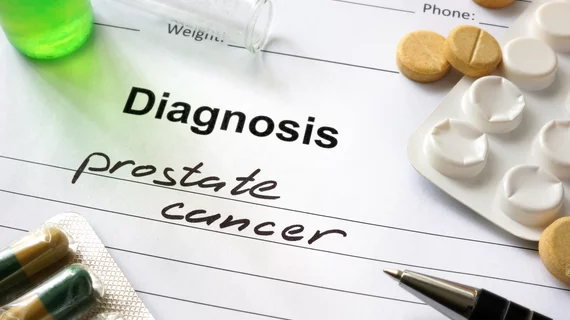ASTRO 2018: SBRT an effective option for low-, intermediate-risk prostate cancer patients
Stereotactic body radiation therapy (SBRT) is a safe and effective treatment for patients with low- and intermediate-risk prostate cancer, according to research presented Oct. 22 at the American Society for Radiation Oncology (ASTRO) Annual Meeting in San Antonio, Texas.
SBRT, a form of external beam radiation therapy (EBRT), allows patients to shorten their course of treatment through larger doses of radiation per session. The treatment is a viable option for prostate cancer patients who have fears of adverse side effects.
“This study should meet those criteria and put patients at ease when considering treatment options,” said lead author Amar U. Kishan, MD, of the University of California, Los Angeles, in a prepared statement. “Radiation therapy is typically delivered in small daily doses over a multi-week period. However, because prostate cancer cells appear to be unusually sensitive to higher daily doses of radiation, you can reduce the duration of treatment from as many as 8-9 weeks with 39-45 treatments down to about 1.5 weeks with 4-5 treatments."
Kishan and colleagues sought to assess the long-term safety and efficacy of SBRT. The study cohort included more than 2,100 men enrolled in institutional phase II trials of SBRT over a 12-year period. About 55 percent of the cohort had low-risk cancer, 32 percent had “favorable intermediate-risk” cancer and 12 percent had “unfavorable intermediate-risk” cancer—or disease with multiple intermediate risk factors.
About 47 percent of patients were treated daily and 5 percent were treated once a week. Doses ranged from 33.5 to 40 Gy and were given in four to five treatments. About 5 percent of patients were given concurrent androgen deprivation therapy over a three-month period.
The researchers followed most of the patients for an average of 6.9 years. A smaller group of patients were followed for an average of 9.8 years. To measure the safety and efficacy of SBRT, Kishan et al. specifically assessed the incidences of biochemical recurrence, distant metastases, biochemical recurrence-free survival and overall survival. The researchers also assessed the occurrence of short-term adverse events within 90 days following completion of SBRT. They found:
- None of the patients died from prostate cancer.
- 6 percent of patients experienced recurrence; 10 percent experienced distant metastases.
- 96 percent of low-risk patients did not have biochemical recurrence at seven years, nor did 91 percent of the favorable intermediate-risk group or 85 percent of the unfavorable intermediate-risk group.
- The overall survival rates after seven years post-treatment for the low-risk and favorable intermediate-risk groups were 91 and 94 percent, respectively. The overall survival rate was 87 percent for the unfavorable intermediate-risk group.
- Severe toxicities were rare.
According to Kishan, SBRT should be a standard option for patients with low- and intermediate-risk prostate cancer.
“Fewer treatments for patients would be more convenient as well as less costly,” Kishan concluded. “It could also reduce missed days of work. The health care system will save money, and patients will save a lot of time and money as well. And, it can provide a significant psychological benefit, in that men can get on with their lives and put their treatment behind them.”
The ASTRO Annual Meeting is Oct. 21-24 at the Henry B. Gonzalez Convention Center in San Antonio.

